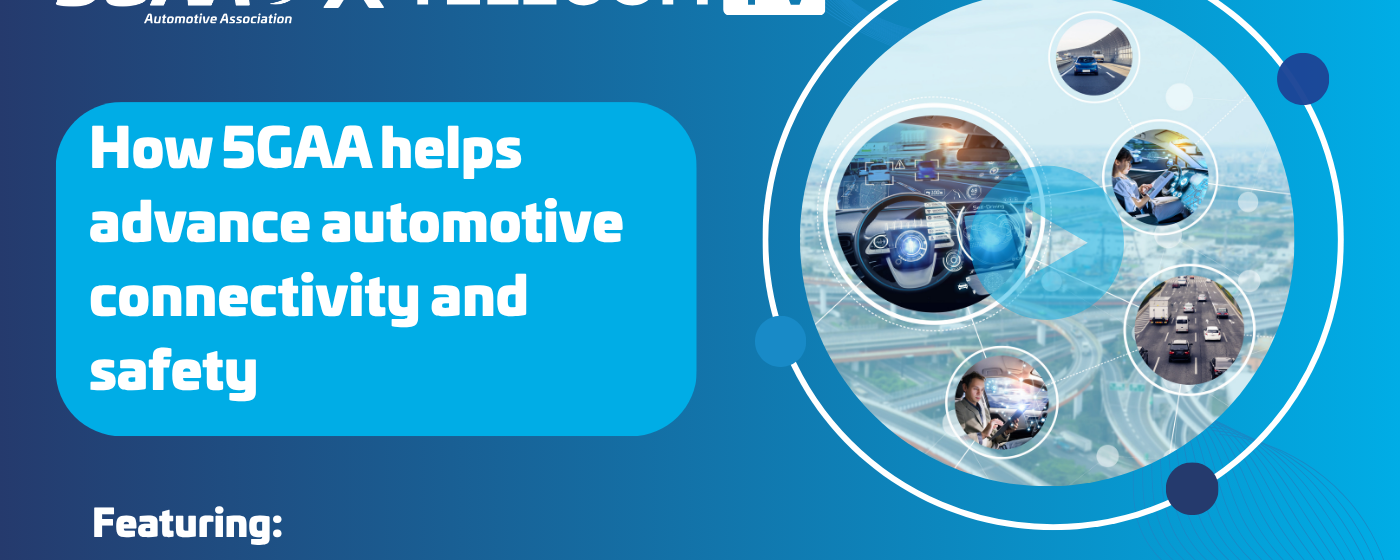
Transforming mobility: How 5GAA helps advance automotive connectivity and safety
Christoph Voigt, Chairman, 5GAA
Video interview by TelecomTV.
At the 2024 5GAA meeting week in Berlin, Christoph Voigt, chairman of 5GAA, discusses the organisation’s role in bridging the automotive and telecoms sectors with 5G technology. He highlights the potential of 5G in enhancing vehicle connectivity and safety through innovations like cellular vehicle-to-everything (C-V2X) technology. He also emphasises the importance of collaboration among industry stakeholders and outlines the ongoing developments and future opportunities for 5G in the automotive sector.
Recorded October 2024.
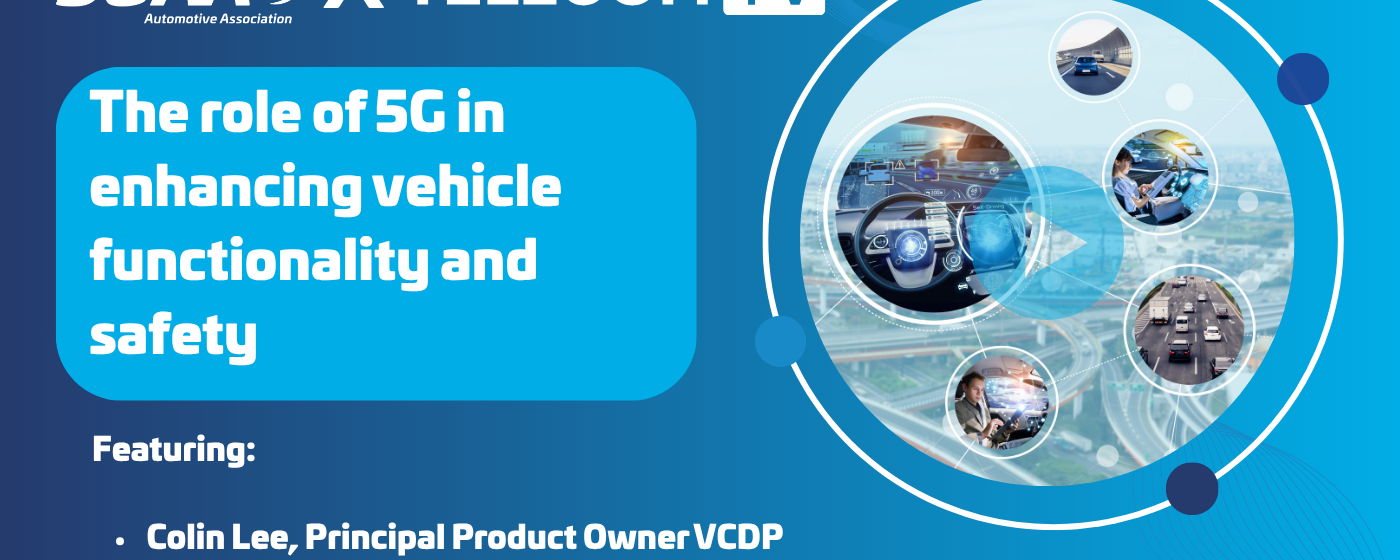
The role of 5G in enhancing vehicle functionality and safety
Colin Lee, Principal Product Owner VCDP Strategy and Technical Specialist V2X, Digital Product Platform, JLR
Video interview by TelecomTV.
Colin Lee from Jaguar Land Rover (JLR) discusses the critical role of 5G technology in the automotive sector, highlighting how connectivity enhances vehicle functionality, safety and customer experience. He explains the evolution from earlier communication technologies to 5G and calls for collaboration among original equipment manufacturers (OEMs), telecoms and government entities to achieve seamless vehicle-to-everything (V2X) communication.
Recorded October 2024.
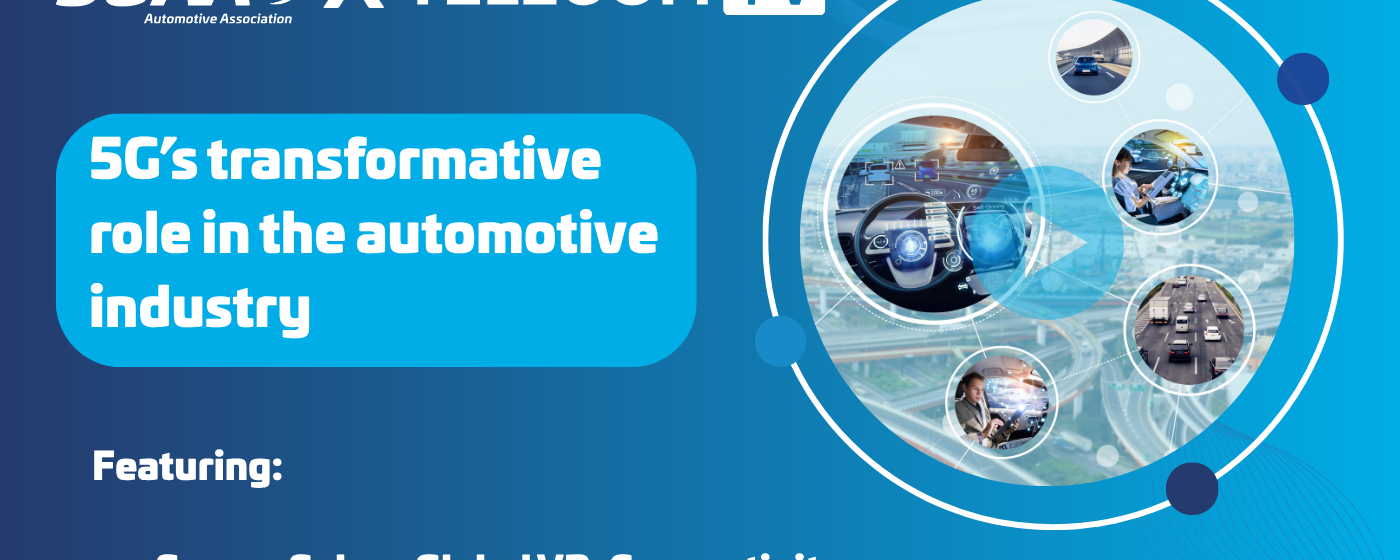
5G’s transformative role in the automotive industry
Suman Sehra, Global VP, Connectivity Portfolio Management, Harman
Video interview by TelecomTV.
Suman Sehra highlights Harman’s role in enhancing connectivity and user experiences in vehicles, including the importance of collaboration within the 5GAA to address challenges in technology, policy, and standardisation. He explains that to ensure a future where 5G enables autonomous driving and seamless connectivity, driven by advancements in network slicing and edge computing, greater collaboration across the automotive and telecom sectors is needed to overcome barriers and scale innovative technologies.
Recorded October 2024.

How Vodafone is enhancing road safety through the STEP platform
Graham Rushton, CTO Partner Markets, Vodafone
Video interview by TelecomTV.
As the first mobile operator to join the 5GAA, Graham Rushton discusses Vodafone’s role in the association and its ongoing commitment to the connected mobility sector. He talks about the development of the Safer Transport for Europe (STEP) platform, which enhances road safety through real-time data sharing. Rushton also addresses future opportunities for autonomous vehicles and the challenges of regulation and collaboration among industry players to create a sustainable ecosystem that benefits consumers.
Recorded October 2024.
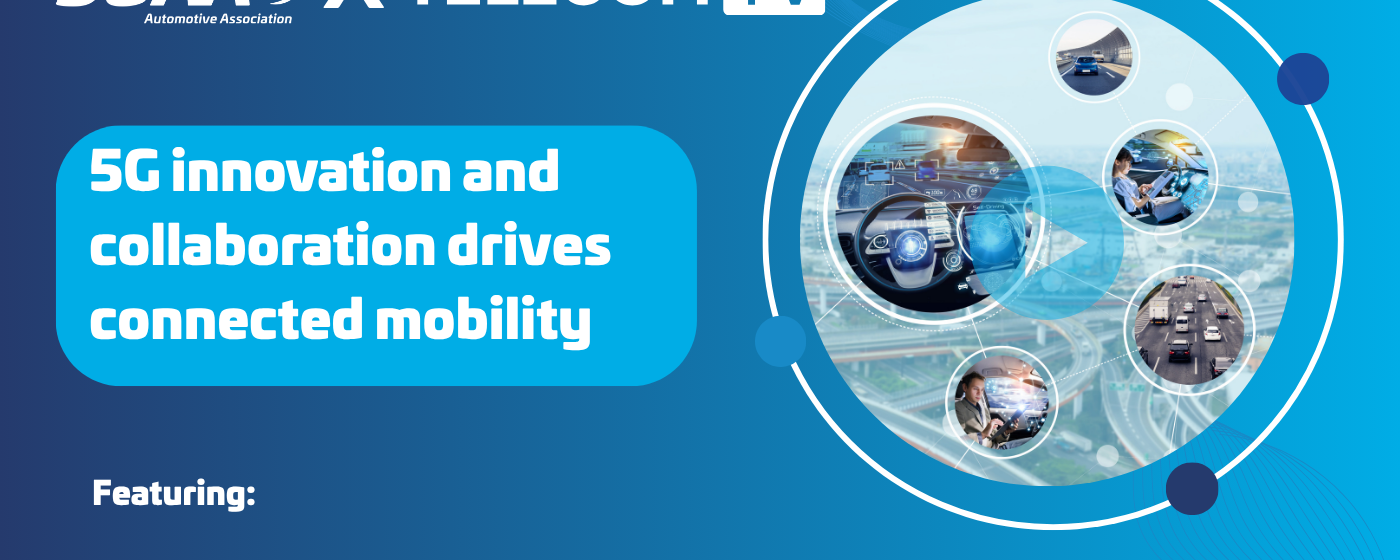
5G innovation and collaboration drives connected mobility
Andreas Schaller, Head V2X Technology Strategy, Bosch Mobility
Video interview by TelecomTV.
Andreas Schaller discusses the role of Bosch Mobility in the connected mobility sector and the importance of 5GAA in aligning industry objectives. He highlights current 5G applications in automotive, such as entertainment and automated parking, and explains what advancements we can expect to see with future 5G releases from 3GPP, including non-terrestrial network support. He also calls for scalable solutions that will work globally to ensure successful implementation, and reiterates the need for continuing collaboration between the telecom and automotive industries if we are to achieve fully autonomous driving.
Recorded October 2024.
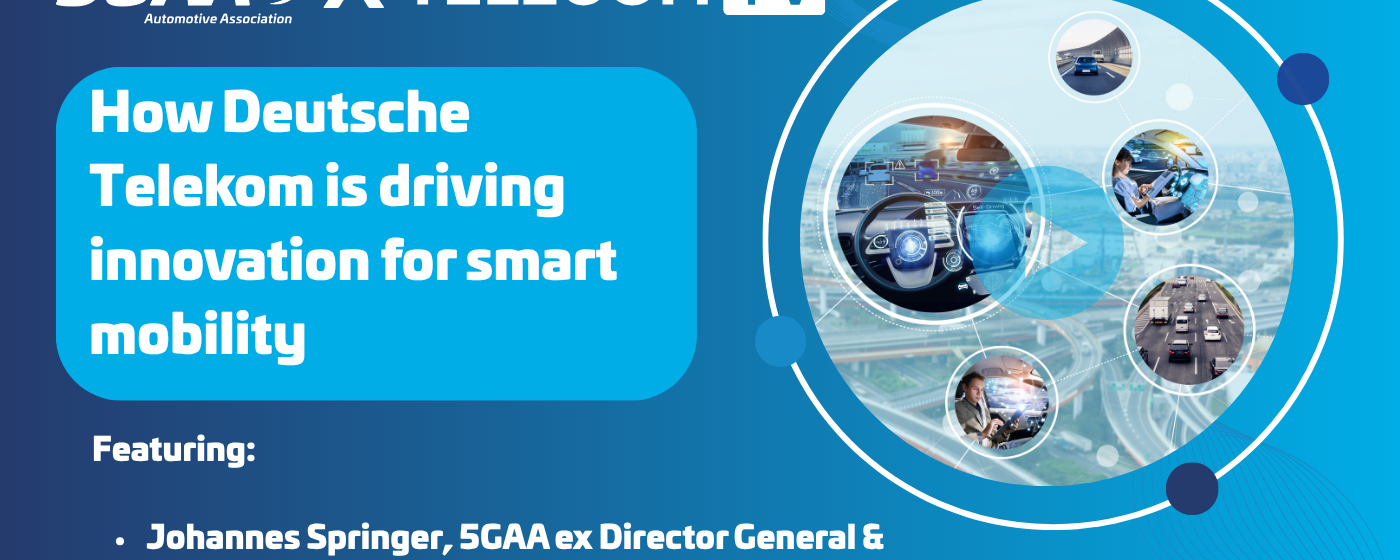
How Deutsche Telekom is driving innovation for smart mobility
Johannes Springer, 5GAA ex Director General & Lead 5G Automotive Program, Deutsche Telekom / T-Systems
Video interview by TelecomTV.
Deutsche Telekom’s Johannes Springer discusses the critical role of 5G in the connected mobility sector, highlighting his company’s involvement in providing both connectivity and operating IT platforms for connected vehicles. He talks about the importance of understanding business customer needs and the advancements 5G brings, such as low latency and network slicing. He also addresses the challenges of achieving global coverage to fully realise the potential of 5G in automotive applications.
Recorded October 2024.
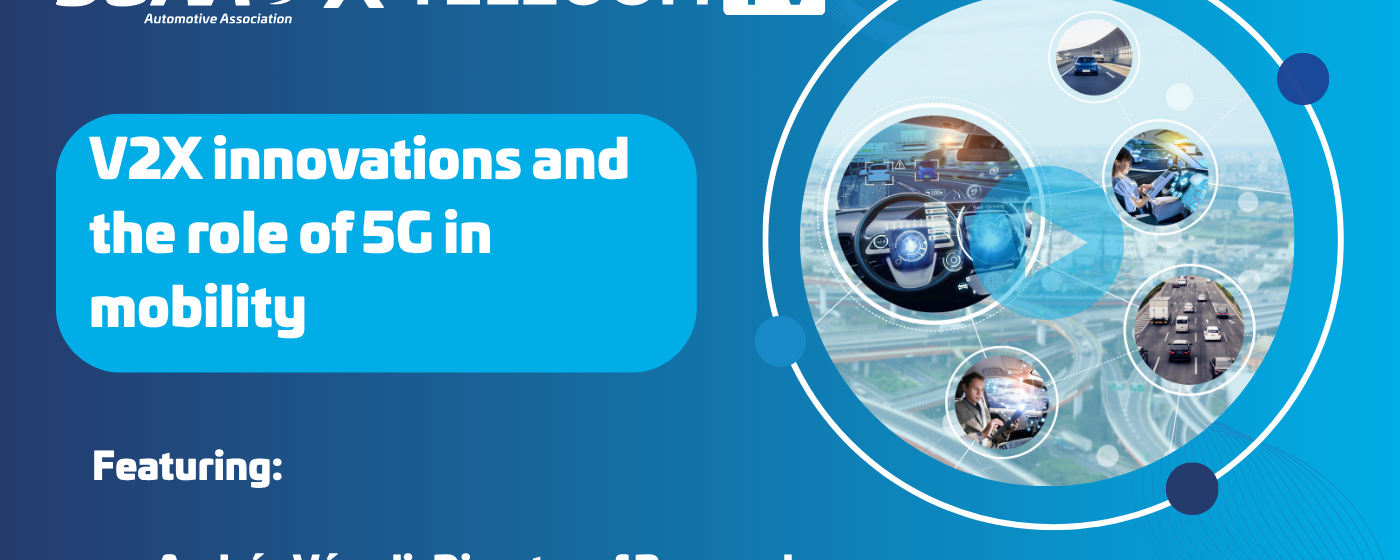
V2X innovations and the role of 5G in mobility
András Váradi, Director of Research, Commsignia
Video interview by TelecomTV.
András Váradi highlights the work Commsignia is undertaking for the connected mobility sector, focusing on vehicle-to-everything (V2X) technology that enables communication between vehicles and infrastructure. He explains how Commsignia implements open standards for traffic safety and discusses the need for increased investment in connectivity to enhance safety and efficiency in automated vehicles via the evolving V2X market.
Recorded October 2024.
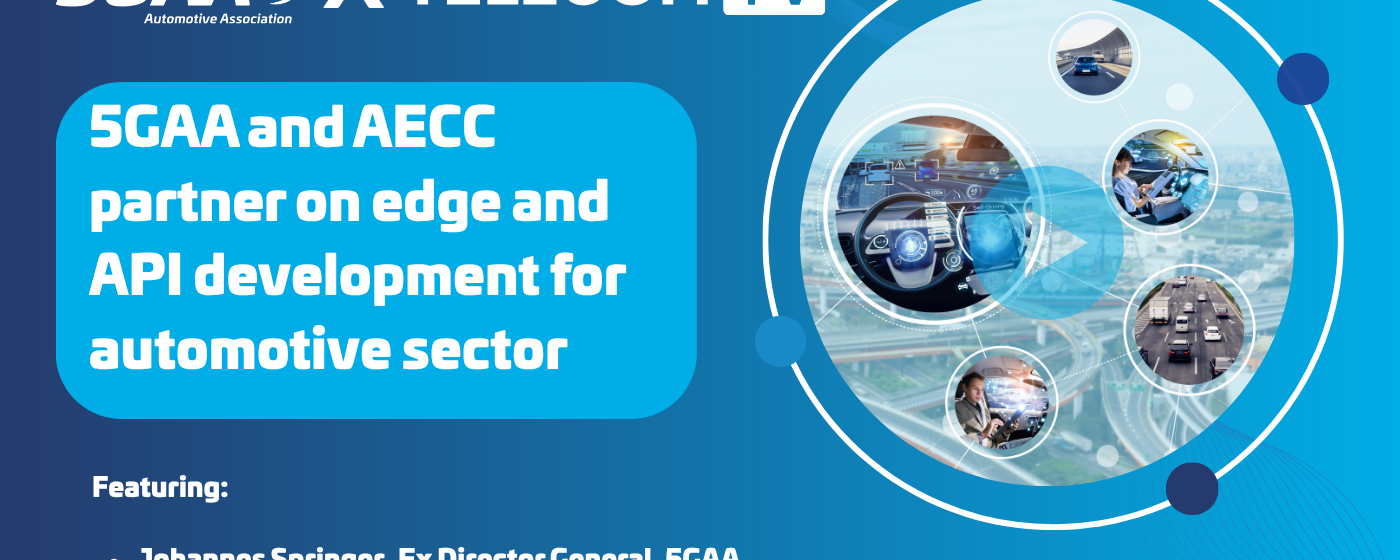
5GAA and AECC partner on edge and API development for automotive sector
Johannes Springer, 5GAA and Muriel Desaeger, AECC
Video interview by TelecomTV.
Since its formation in 2016, the 5GAA has been actively promoting the adoption of cellular vehicle-to-everything (C-V2X) as the key technology to deliver full connectivity to the automotive market. It brings together automotive manufacturers, Tier 1 suppliers, chipset and communication system providers, mobile operators and infrastructure vendors. During its conference in Berlin last week, the 5GAA signed a memorandum of understanding (MoU) with the Automotive Edge Computing Consortium (AECC) to facilitate cooperation around the use of multi-access edge computing (MEC), as well as the advancement of network APIs and their use by the mobility sector. The AECC is investigating the use and management of big data, mainly via the edge, to make it cost and time effective to the automotive industry. It has already entered into an agreement with the GSMA (read the full story here). Together, the two associations want to ensure that these new capabilities are available on a global basis, and harmonised across different countries and regions.
Featuring:
- Johannes Springer, Ex Director General, 5GAA
- Muriel Desaeger, AECC, and Technical Head of Electronic Engineering Division, Toyota
Recorded October 2024.
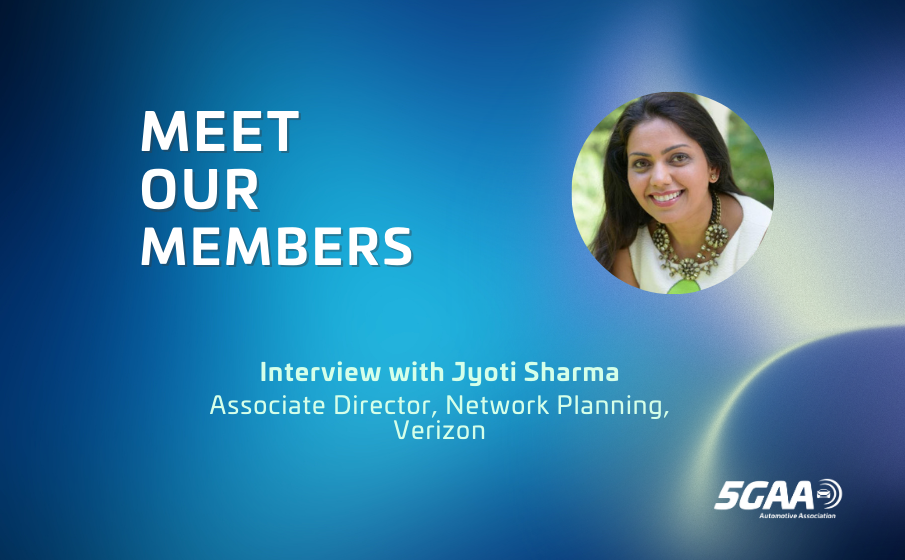
Meet Our Members – Interview with Jyoti Sharma, Verizon
In our ongoing “Meet Our Members” series, we explore the unique journeys and expertise of the individuals who make the 5G Automotive Association. Each interview sheds light onto the incredible work, vision, and passion of the people behind our organisation. You can check out our last conversation with Menno Malta, CEO of Monotch, here.
This time, we introduce Jyoti Sharma, Associate Director of Network Planning at Verizon and alternate board member at 5GAA since 2021. Jyoti has brought her deep industry insight to a range of work items, including Vehicle-to-Network-to-Everything (V2N2X) and has led initiatives such as the Vulnerable Road User (VRU) Demo. Her commitment to accelerating the large-scale deployment of V2X technologies make her a valuable contributor to the 5GAA, and we’re excited to learn more about her perspective on the future of 5G and MEC in transportation.
Could you tell us briefly about Verizon’s involvement in 5GAA and how your company benefits from being a member?
Verizon has been an active member of 5GAA since its inception. We started out as a general member and initially contributed at the working group level. We saw tremendous value in taking a leadership role in 5GAA as a major U.S. telecommunications provider and were elected by the members as a gold board member in 2021. Currently, Verizon is a platinum board member of 5GAA and we are playing a critical strategic role as one of the key stakeholders in the V2X ecosystem.
When did you first become part of the 5GAA board? What are some of your responsibilities, and what has been your most rewarding experience so far?
I represent Verizon on the 5GAA board as an alternate board member since 2021. In my role as a board member I have the privilege and responsibility to ensure 5GAA remains focused on key strategic focus areas which will accelerate a large-scale deployment of Vehicle-to-Everything (V2X) across the globe. My most rewarding experience has been to collaborate with other 5GAA members who are leaders from auto OEM customers, their tier 1 suppliers, chipset and module providers and other ecosystem partners. This technical collaboration between all the stakeholders is the key to drive innovation and unlock the full potential of V2X communications at scale and make it a reality.
Can you share any recent examples of how Verizon has collaborated with other 5GAA members to drive innovation in the industry?
Verizon has taken a leadership role in bringing the V2X ecosystem partners together under the 5GAA umbrella. We have demonstrated thought leadership in defining the network architecture to solve challenging V2X requirements leveraging key technology enablers such as 5G, multi-access edge computing (MEC) and Hyper Precise Location. Our recent V2X VRU (Vulnerable Road User) demo in Detroit showcasing interoperability between different network operators and application providers generated a very positive response and engagement from auto OEMs, Departments of Transportation and road operators. The demo was successful due to close collaboration with several 5GAA member companies.
As the lead of the VRU DEMO Work Item, could you elaborate on the significance of demonstrating interoperability in the context of Vulnerable Road User protection solutions?
VRU DEMO is one of the key strategic focus areas at the 5GAA board level that the industry has been trying to address for many decades. We believe the C-V2X and other technology enablers (5G, MEC, Hyper Precise Location) are ready to mitigate the number of road accidents involving vulnerable road users such as pedestrians and cyclists. In order to deploy such a VRU solution at scale it needs to work across multiple operators, multiple auto OEMs, multiple application providers and multiple cloud providers. We reached a significant milestone by demonstrating interoperability amongst different stakeholders and showcased the technology is ready to deploy at scale with existing networks. The learnings from the demo are being replicated in other parts of the world and are informing U.S. DOT V2X Deployment plans.
What criteria were used to select the specific use cases for demonstration in VRU DEMO? How did these use cases represent real-world scenarios and challenges?
There has been extensive discussion within 5GAA to define different VRU scenarios. Different flavors of VRU use cases have been documented in published technical reports. The demo team carefully selected most common real world VRU scenarios such as active pedestrian crossing alert and using roadside cameras and artificial intelligence, machine learning logic in the MEC to detect pedestrians and alert the drivers to avoid potential collision.
Verizon participated in the demos with a showcase of its network solution using multi-access edge computing. How does MEC differ from traditional network-based computing in terms of its benefits for VRU protection applications?
MEC allows us to bring traditional cloud compute and storage within the mobile network closer to the edge where the data is generated reducing the end to end latency. It is well established that MEC is a key differentiator and technology enabler for latency critical use cases such as VRU protection. Verizon has already deployed public MEC across the United States in partnership with cloud providers. We continue to drive innovation by developing standard MEC and Network APIs for application providers. During the VRU demo we demonstrated near real time VRU alerts over 5G and applications hosted on Verizon’s Detroit MEC.
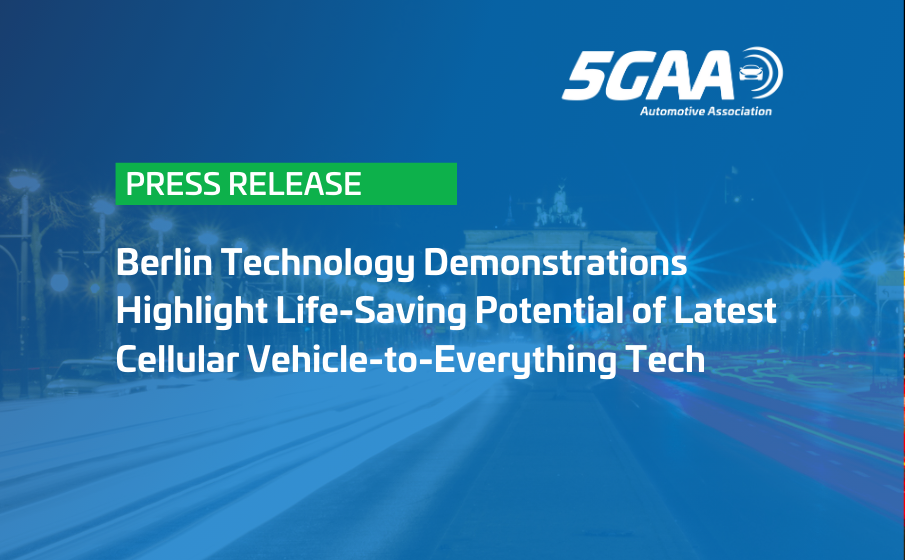
Berlin Technology Demonstrations Highlight Life-Saving Potential of Latest Cellular Vehicle-to-Everything Tech
BERLIN, 25 October 2024 – The 5G Automotive Association (5GAA) this week demonstrated the latest innovations in the Cellular Vehicle-to-Everything (C-V2X) technology family to help achieve “Vision Zero” for all road users. The demonstrations illustrated the potential of 5G-V2X to enable new use cases integrated across multiple automakers, service providers, and mobile network operators.
For the very first time, 5GAA demonstrated 5G-V2X Direct technology integration in Audi and BMW vehicles with the support of 5GAA members Autotalks, Bosch, Commsignia, and Fraunhofer FOKUS. This demonstration illustrated how technology can alert drivers about pedestrians and cyclists even before they can see them, leveraging sensors and a camera feed from other vehicles. The demonstrations showed the high bandwidth and low latency performance characteristics of 5G-V2X Direct using ETSI Release 2 messages.
5GAA members Bosch, Commsignia, Deutsche Telekom, Ericsson, Keysight Technologies, LG Electronics, Mercedes-Benz and Vodafone, and the Coalition for Cyclist Safety, showcased ready-to-deploy, interoperable applications to increase awareness of vulnerable road users and emergency vehicles on public roads in central Berlin. Safety awareness alerts were delivered via 4G and 5G networks with low latency thanks to Multi-Access-Edge Computing and precise positioning, as verified by Anritsu’sperformance measurements. ETSI-standardised messages were shared in real time between apps from various service providers.
“In Germany and across Europe, the ecosystem is ready to leverage the tens of millions of vehicles already connected via mobile networks and is now geared for the 2nd generation technology with 5G-V2X including direct communications,” said 5GAA Chairman Christoph Voigt.
Autotalks and Bosch, together with Commsignia, demonstrated the benefits of collective perception related to vulnerable road users. Ettifos, Keysight Technologies, Rohde & Schwarz and SEA Datentechnik also exhibited 5G-V2X Direct interoperability and conformity solutions and radio performance verification.
To show that C-V2X is about both safety and efficiency, Audi, supported by Commsignia and Autotalks, demonstrated a use case for “cooperative parking” based on 5G-V2X Direct.
In line with 5GAA’s Visionary 2030 Roadmap, 5G is continuously being deployed in many car models and 5G-V2X Direct is expected to be mass-deployed in commercial vehicle models as early as 2026. This week’s event underlined the continuous commitment of major European automakers to 5G-V2X following 5GAA’s Open Statement[1] in 2023.
About the 5GAA
The 5G Automotive Association (5GAA) is a global, cross-industry organization of more than 120 members, including leading global automakers, Tier-1 suppliers, mobile operators, semiconductor companies, and test equipment vendors. 5GAA members work together to develop end-to-end solutions for future mobility and transport services. 5GAA is committed to helping define and develop the next generation of connected mobility, automated vehicles, and intelligent transport solutions based on C-V2X. For more information about 5GAA, please visit www.5GAA.org.
For further information
Please see our brochure about the Berlin demonstrations here:https://5gaa.org/content/uploads/2024/10/5gaa-berlin-demos-brochure.pdf
Media contact: marcom@5GAA.org
[1] https://5gaa.org/content/uploads/2024/10/5gaa-open-letter-september-2023.pdf


